“That there were other worlds, invisible, unknown, beyond imagination even, was a revelation to him.” -Kim Edwards
And every time two particles interact with one another, the Universe is forever different from how it was a moment before. Here at Starts With A Bang, this past week saw us explore a number of aspects of our ever-changing reality, including:
- Why does E=mc^2? (for Ask Ethan),
- The astronomer who brought us the Universe (for our Weekend Diversion),
- A beautiful bridge between a lovely lens (for Mostly Mute Monday),
- Photonic Booms (a fantastic contribution from Sabine Hossenfelder),
- The Sun's littlest secret, and
- The closest invisible lights (for Throwback Thursday).
Today is a special edition of our Comments of the Week, because it's the fifty-second week in a row we've done it, marking a full year since I've been highlighting and calling out the best and most thought-provoking of what you've had to say. Let's see what we've got!
Image credit: Denele Campbell of http://denelecampbell.com/2014/05/13/letters-not-sent-4/.
From Michael Kelsey on why E=mc^2 works out without constants: "In “customary units” (not Imperial, Uncle Monty :-), the units we use for energy (for example, calories, horsepower, or BTUs) are entirely unrelated to mass, speed, or anything else. So if you foolishly try to compute the energy in BTUs of a stone of flour, using 670 million miles per hour for the speed of light, you are *definitely* going to have to throw in a whole bunch of weird, arbitrary constants."
The funny thing is this: if you measure "mass" in some unit of actual mass (kilograms, milligrams, slugs, grains, etc.) and the "speed of light" in some unit of actual speed (meters-per-second, miles-per-hour, parsecs-per-sidereal-year, etc.), you will get a value for energy that is correct solely by using E=mc^2.
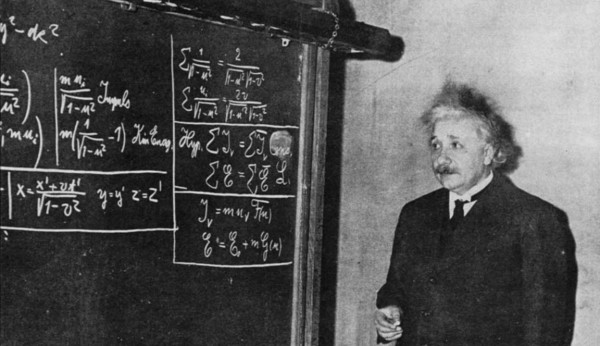 Image credit: Einstein deriving special relativity, 1934, via http://www.relativitycalculator.com/pdfs/einstein_1934_two-blackboard_d…
Image credit: Einstein deriving special relativity, 1934, via http://www.relativitycalculator.com/pdfs/einstein_1934_two-blackboard_d…
But what you might not appreciate are the units of that value. You might be expecting something like kilocalories, joules, or metric tonnes of TNT, but in the case of units relating three different terms, you only have two degrees of freedom. If you measure your mass in grams and your speed-of-light in cm/s, your energy isn't going to be in joules, even if you wanted it to be. But if you're willing to let your unit choices for any two quantities determine your units of the third -- in this case, in units of gram*cm^2/s^2, or ergs, you'll never need a conversion factor at all. E=mc^2 is exact.
From Omega Centauri on the astronomer who discovered the Universe: "Was the distance to the SMC known at the time? If not the fact that the SMC was itself an Island universe distinct from the MilkyWay would have been a big deal."
Oh, how I wish. And not only me, but how Henrietta Leavitt herself wished it were true. For she recognized the implications of what it could mean if she could discover the distance to the SMC:
 Image credit: Periods of 25 Variable Stars in the Small Magellanic Cloud.; Leavitt, H. S. & Pickering, E. C.; Harvard College Observatory Circular, vol. 173, pp.1-3, 1912. Emphasis mine.
Image credit: Periods of 25 Variable Stars in the Small Magellanic Cloud.; Leavitt, H. S. & Pickering, E. C.; Harvard College Observatory Circular, vol. 173, pp.1-3, 1912. Emphasis mine.
Only a very small number of parallaxes -- the only other distance indicator to the stars at the time -- were known, and none of Cepheid variables. Even today, measuring the parallax of the closest Cepheids (or stars in general) is a really important task; uncertainties of even 3-4% propagate all the way up the cosmic distance ladder. This is why, if you look at the uncertainties on pretty much any object in the Universe, they are substantial. A large portion of that error comes from the very first step: our measurements of the nearest stars.
Image credit: NASA, ESA, G. Tremblay (ESO), M. Gladders and M. Florian (University of Chicago), S. Baum, C. O’Dea, K. Cooke (RIT), M. Bayliss (Harvard-Smithsonian Center for Astrophysics), H. Dahle (University of Oslo), T. Davis (ESO), J. Rigby (NASA/GSFC), K. Sharon (University of Michigan), E. Soto (Catholic University of America), and E. Wuyts (Max Planck Institute for Extraterrestrial Physics); Acknowledgment: NASA, ESA, and the Hubble Heritage (STScI/AURA)-ESA/Hubble Collaboration.
From Wow -- a very simple statement -- on gas-poor ellipticals merging and forming stars: "Stars give off gas when they explode."
This was in response to a question about how ellipticals, which are supposed to have lost their gas, could form new stars from merging. Of course, many things are complicated in this Universe, but one thing you should never do is confuse gas-poor with gas-free. And to that end, I want you to think about how stars form and how stars die. In other words, every time we form a star, I want you to think about what winds up returning to the intergalactic medium.
When you form stars, you form them from a large molecular cloud that collapses. Most commonly, a star forming region is at minimum a few thousand solar masses, but can be as large as billions of solar masses, in the case of perhaps a starburst galaxy like Messier 82 (above, in infrared). But when you do, only about 10% of the gas winds up forming stars; the rest gets blown off by the hot, young ultraviolet stars back into the intergalactic medium.
Now, it's true: when you form a giant elliptical, a large amount of that gas winds up being expelled from the resulting galaxy, as even the baryons and dark matter combined don't have enough mass to hang on to the rapidly-moving heated, expelled gas.
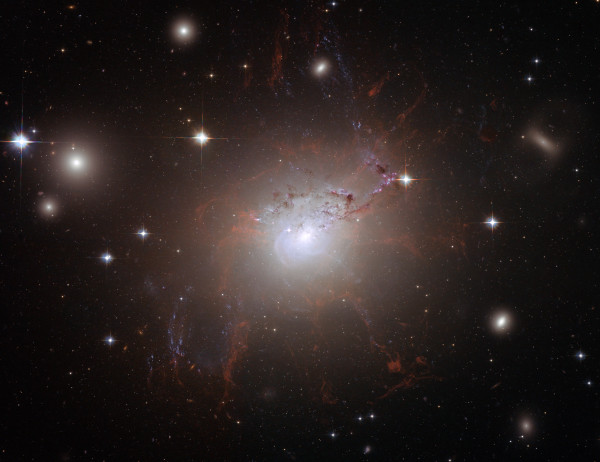 Image credit: Fabian et al./ESA/NASA, via https://www-xray.ast.cam.ac.uk/papers/ngc1275/.
Image credit: Fabian et al./ESA/NASA, via https://www-xray.ast.cam.ac.uk/papers/ngc1275/.
Now, even though this expels much of the gas from a galaxy, it doesn't expel it all. In fact, time will constantly replenish this gas, as about 50-to-80% of all but the lowest-mass, longest-lived stars will return to the interstellar medium, where they will participate in forming the next generation of stars. And when two giant ellipticals merge together, just lie when two gas-rich galaxies merge together, the star formation rate skyrockets.
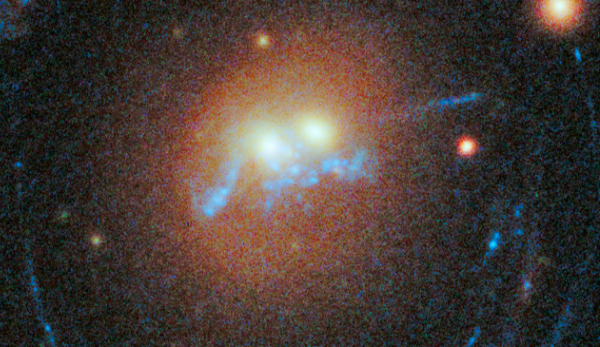 Image credit: NASA, ESA, G. Tremblay (ESO), M. Gladders and M. Florian (University of Chicago), S. Baum, C. O’Dea, K. Cooke (RIT), M. Bayliss (Harvard-Smithsonian Center for Astrophysics), H. Dahle (University of Oslo), T. Davis (ESO), J. Rigby (NASA/GSFC), K. Sharon (University of Michigan), E. Soto (Catholic University of America), and E. Wuyts (Max Planck Institute for Extraterrestrial Physics); Acknowledgment: NASA, ESA, and the Hubble Heritage (STScI/AURA)-ESA/Hubble Collaboration.
Image credit: NASA, ESA, G. Tremblay (ESO), M. Gladders and M. Florian (University of Chicago), S. Baum, C. O’Dea, K. Cooke (RIT), M. Bayliss (Harvard-Smithsonian Center for Astrophysics), H. Dahle (University of Oslo), T. Davis (ESO), J. Rigby (NASA/GSFC), K. Sharon (University of Michigan), E. Soto (Catholic University of America), and E. Wuyts (Max Planck Institute for Extraterrestrial Physics); Acknowledgment: NASA, ESA, and the Hubble Heritage (STScI/AURA)-ESA/Hubble Collaboration.
This doesn't mean the star formation rate is as high as it would've been for a comparably massed spiral galaxy, but it's still quite large, and results in lots of new star formation. The gas was always there, just not as much of it, and -- as Wow correctly states -- it replenishes over time as well.
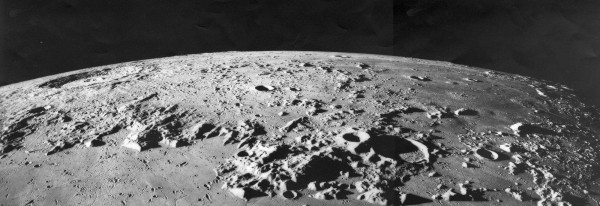 Image source: David Talbott http://rense.com/general71/p3.htm.
Image source: David Talbott http://rense.com/general71/p3.htm.
From Sinisa Lazarek on Photonic booms: "If you are standing on the Moon, I don’t believe you would see the spot moving faster then the speed of light. I think you would see the spot jumping from place to place.. and the overall distance and time would indeed be faster then what light would travel in vacuum in straight line… but you would not see continuous motion across the surface. Looking from earth yes.. but not if you are an observer on lunar surface. Instead you would see a spot in one place, then nothing, then it would appear in another place further away. . It would be similar to taking a water hose and doing the same thing.. move it slow and you get a solid line.. but move it quickly.. and you get doted line. So I think it’s an unnecessary confusion saying that in some way it goes faster than c."
Oddly enough, you may see continuous motion across the surface; this is conditional only on the frequency and flux of your laser. Which is to say, to go with your garden hose analogy, if you double the number of photons outputted per second (the luminosity of your laser), you halve the distance between photon "spots" (analogous to the water droplets of a garden hose). Since photons are quantized, you will necessarily always have discontinuities, but with a high enough flux, this will be indistinguishable from continuous.
 Image credit: Sabine Hossenfelder; see explanation here: https://medium.com/starts-with-a-bang/photonic-booms-6ee592e487fd.
Image credit: Sabine Hossenfelder; see explanation here: https://medium.com/starts-with-a-bang/photonic-booms-6ee592e487fd.
So if you're on the lunar surface, and someone sweeps their laser pointer from the bottom to the top of the Moon, it will appear partway up from the bottom at first, due to the curvature of the Moon, then move in two directions -- up and down from that spot towards both edges -- with the lower spot hitting the bottom edge first and the upper spot racing towards the top, moving more quickly at first and then decelerating as it moves towards the upper edge.
Optical phenomenon: where light-travel-time actually matters. How neat is that!
From Charles Shannon on the solar neutrino problem: "I recall reading a John Gribbin book in the 1980s that offered the possibility that the sun’s core reaction was in the process of going out, or had in fact already gone out. The light and energy emitted from the surface would be only gradually starting to decrease, because of the long delay migrating from the core. The idea astonished me, but I realized it was a valid attempt to explain a real observation. You can imagine my relief when the missing two-thirds of the solar neutrinos were detected."
Although I never read it, The Death of the Sun is available online (for dirt cheap), and here's the thing: if the Sun actually did go out -- like the fusion in the core suddenly stopped (which is not how stars work, mind you) -- the light and heat from the Sun would still come out just the same. It wouldn't even begin to drop in flux for thousands of years.
But we'd notice the neutrino flux would cease in just 8.5 minutes.
We do have neutrino detectors operating continuously, in many aspects, at greater precision than ever before. If we had a supernova in our own galaxy go off, we'd detect hundreds of thousands of neutrinos from it, compared to the ~20 or so we detected from SN1987a just 168,000 light-years away.
Fortunately, the wild speculation that the Sun would be shutting off its fusion simply isn't consistent with the way stars work; when you begin to run out of fuel in your core, your star actually becomes more luminous as the core begins to contract. Our Sun -- much like Procyon is doing now -- will begin to grow into a subgiant when this happens, becoming more luminous and moving towards cooking us, an increase that happens rapidly over the span of tens of millions of years.
Image credit: Richard Powell of http://www.atlasoftheuniverse.com/.
And finally, from zotrules on our local neighborhood: "How did WISE take care of “Nemesis”? Are you saying that it has performed a full spherical survey of our stellar neighborhood?"
Quite simply, WISE performed an all-sky survey, and was able to set the limit that any brown dwarf, any L-or-T-tauri star, would not be within about 0.3 light-years of Earth, no matter how faint. Here is a thumbnail of that map, in a Mollweide projection.
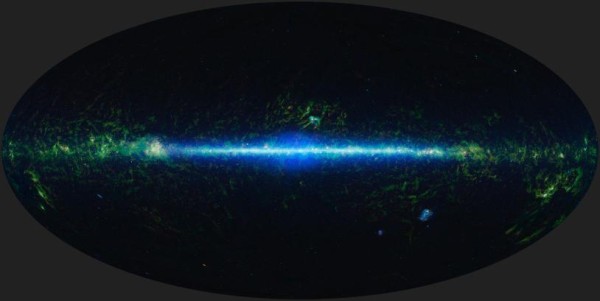 Image credit: NASA/JPL-Caltech/UCLA, via http://photojournal.jpl.nasa.gov/catalog/PIA15481.
Image credit: NASA/JPL-Caltech/UCLA, via http://photojournal.jpl.nasa.gov/catalog/PIA15481.
All-sky survey, no Nemesis. But it would take a telescope like JWST to do an all-sky survey and rule out the presence of a brown dwarf closer than Proxima Centauri. Stay tuned!
In the meantime, thank for a great week of everything, and I'll see you back here soon for more joys and wonders of the Universe!
- Log in to post comments

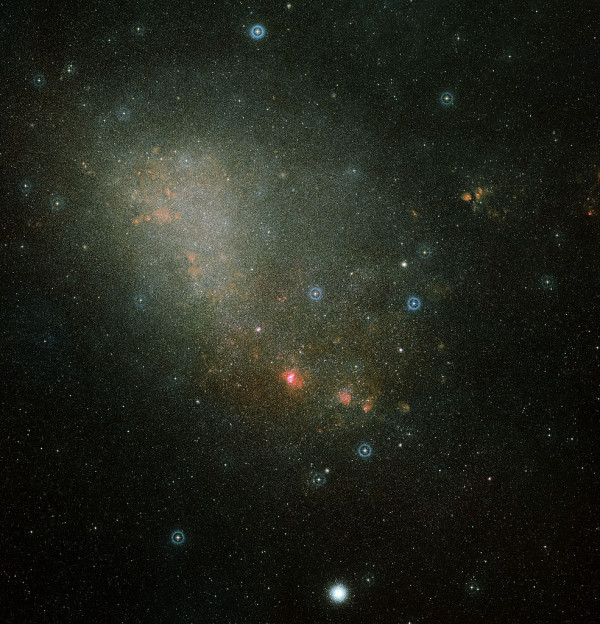
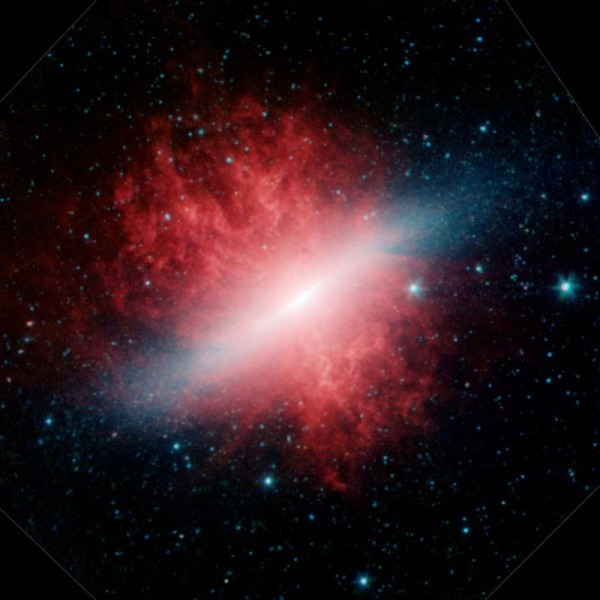
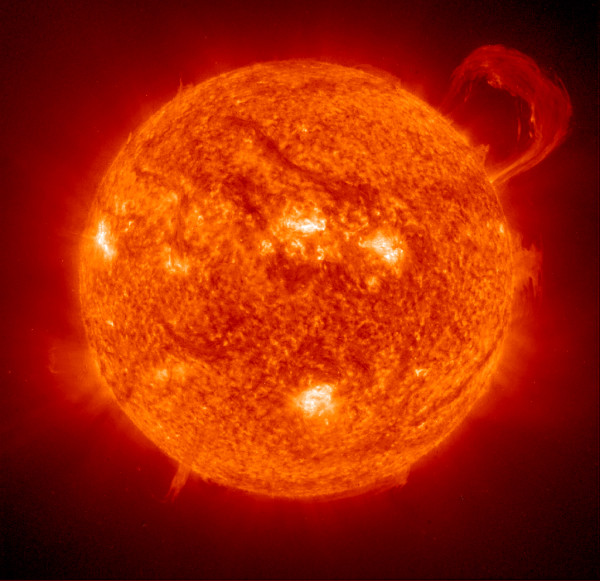

Thank you for addressing my question. a quick follow up.
"Since photons are quantized, you will necessarily always have discontinuities, but with a high enough flux, this will be indistinguishable from continuous."
I was reffering that the intensity/colimation will drop. And it won't be a spot anymore. :)
If we have i.e. a "spot" that is formed by 100 photons hitting i.e 1cm^2 per 1s. (from POV of observer on moon). And someone on earth changes the angle so the next second it's somewhere else. From POV on the moon there's still 100 photons arriving per 1s, but the area is no longer 1cm^2 but hundreds of kilometers.. thus only perhaps 1 photon per 1cm^2 instead of 100 before.. until someone on earth keeps it long enough in some position to again have 100photons/cm^2/s.
By increasing the flux, there will be more photons coming in, true, but there will always be the same drop in intensity/colimation as before, and it's no longer the spot that you began with but a wall of light in extreme case. From POV on the moon, they won't see a spot of same intensity propagating from one place to another.. they will see a curtain appearing across the whole surface which will be much dimmer than original spot.
Just thought that the description of what an observer on the moon would see is a bit inacurate. :)
Well, another point is that even if it were gas free, if there are stars, it won't *stay* gas free.
Not that ellipticals *are* gas free, mind... Just that it wouldn't matter if they were.